| If you do NOT see the Table of Contents frame to the left of this page, then Click here to open 'USArmyGermany' frameset |
|||
1st Infantry Division |
|||
|
|
|||
|
|||
|
|
|||
| Special Troops | |||
| Division Special Troops | |||
Headquarters Detachment |
|||
| Headquarters & Headquarters Detachment, 1st Infantry Division | |||
| 1954 | |||
| (Source: 37th Anniversary Issue of the AMERICAN TRAVELER, August 1954) | |||
| 1951 | |||
| (Source: 34th Anniversary Issue of the AMERICAN TRAVELER, August 1951) | |||
| 1st Quartermaster Company | |||
| 1954 | |||
| (Source: 37th Anniversary Issue of the AMERICAN TRAVELER, August 1954) | |||
| 42nd Scout Dog Platoon | |||
| 1951 | |||
| (Source: STARS & STRIPES, June 16, 1951) | |||
| The 42nd Scout Dog Platoon, attached to the 26th Infantry Regiment, was the first Infantry Scout Dog Platoon in the European Command. The 42nd Scout Dog Platoon was organized in 1949 in Lenggries where the handlers and dogs were trained at the USAREUR Quartermaster School. |
|||
| 1954 | |||
| (Source: 37th Anniversary Issue of the AMERICAN TRAVELER, August 1954) | |||
| 1st Reconnaissance Company | |||
| 1954 | |||
| (Source: 37th Anniversary Issue of the AMERICAN TRAVELER, August 1954) | |||
| 1st Replacement Company | |||
| 1954 | |||
| (Source: 37th Anniversary Issue of the AMERICAN TRAVELER, August 1954) | |||
| 1st Signal Company | |||
| 1951 | |||
| (Source: 34th Anniversary Issue of the AMERICAN TRAVELER, August 1951) | |||
| 1st Signal Company, composed of 13 officers and 354 enlisted personnel, is the oldest signal unit in the United States Army, having celebrated its 53rd anniversary July 27, 1951. Composed as it is entirely of specialists, the Signal Company is looked to for trained signal personnel for all units of the 1st Division. Training Courses in radio operation, field wire construction, message center and teletype operations are constantly conducted. Lt Col M.C. Mautz, Division Signal Officer, directly supervises all 1st Division signal operations, and advises the commander on all communications matters. The Signal Company is commanded by Captain Thomas P. Cunninham. A partial breakdown of the company's four platoons and 10 operating sections will give some idea of the complexity of operations in which the specialists of the unit are engaged. Some of the more distinct divisions are: the headquarters platoon, message center platoon, Division signal supply office, construction platoon, telephone and teletype section, radio relay, radio operations, and motor sections. The initial means of communications in the infantry division is continuous wave radio, followed by radio link carrier and very high frequency equipment system which remains in operation until wire can be installed. |
|||
| 1952 | |||
| (Source: Email from Paul Durant) | |||
| I was shipped to Vaihingen, Germany assigned to an AGL (air-ground liaison) unit. AGLs were new. Shortly after arriving (Jan 2, 1952), a training alert required us to bivouac in the Alps. I had not yet been assigned winter gear and I nearly froze my GI ass off hanging out in the cab of a deuce and a half. A couple month later, the AGL units were abandoned because of bad experiences in Korea.
I was transferred to the 1st Signal Company of the 1st (Inf Div) then located in Darmstadt and practiced my MOS, a cryptographer. A couple months later I was TA'd to a signal school where I learned to be a teletype repairman. Prior to this school, I had displayed no mechanical ability. I was also supposed to assum crypto maintenance duties. I can't remember where the school was but it was not at Ansbach. I can remember that one of the instructors on fundamentals of electricty was a German National who spoke very good "American" and was Physic teacher in a prior life. I visited regimental HQs to repair their fancy new teletype machines. I was therefore given access to a jeep. The Regiments used their own permanent assigned personnel for signal support. Had not contact with DivArty except that they tried to recruit me to transfer and play on their football team. The prior year I was on SMU's freshman team. |
|||
| (Source: 36th Anniversary Issue of the AMERICAN TRAVELER, August 1953) | |||
| 1st Signal Company moved from Darmstadt to Hindenburg Kaserne, Würzburg, in July 1952. | |||
| 1954 | |||
| (Source: 37th Anniversary Issue of the AMERICAN TRAVELER, May 1954) | |||
| The 1st Signal Company provides communications for the 1st Division.
It sounds simple. You string a wire -- finis. It isn't simple. It is tough work, back-breaking work, long work. The company has to be there "before" and it's got to clean-up "after." It has to contend with forests and rivers and mud and wire-breaks and the enemy. Commanded by Capt George W. Ghent, the 1st Signal Co does all of these things and it does them well. Its work is sectionalized so that experts in different fields can devote primary concentration to the job making use of their particular skills. The Division signal officer's section issues all signal operation instructions and standing signal instructions for the Division. It also controls all means of communications with the Division, particpates in field exercises, and represents the commanding general in matters pertaining to communications with the Division. The administration section handles the supply room, the mess section and the training section. The motor pool section insures that all vehicles within Signal Company are properly maintained at all times. The Division signal supply section is divided into three sub-sections: |
|||
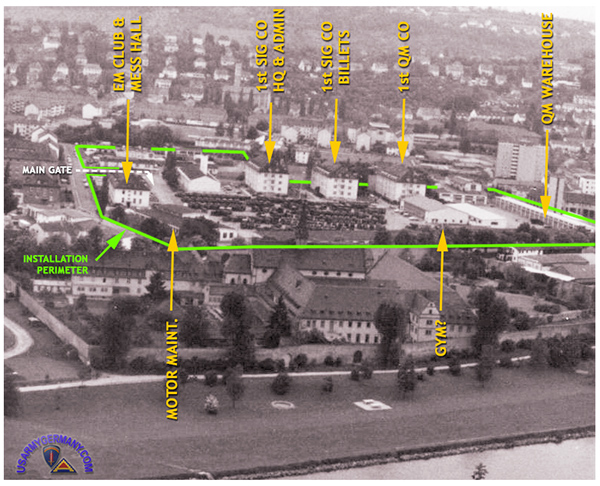 Hindenburg Kaserne, Würzburg (Infomation = early 1950s; Photo courtesy Tom Crowder) |
|||
| (Source: Email from John Veit) | |||
| I was in the 1st Signal Company at Hindenburg Kaserne in Wuerzburg. I was a radio operator (hi-speed). We usually operated radio teletypes between Division and Corps, and used dits and dahs for Division to Regiment and lower level units. In the USAREUR Signal School photo (above), there looks to be a radio van of the type we used, behind and to the left of the helicopter. Note the stairs up to the door and the antenna mounted. Right inside, on the right, was a BC 610 transmitter as I recall, and other receivers and one or two teletype machines. Our deuce and a half had a ring mount at the front for a 50 caliber machine gun that we used to shoot now and then. The photo of Hindenburg Kaserne (above) is how I remember it. The whole area looks bigger than I remember. EM Club / Mess Hall -- The large building on the left in the photo was the EM club and mess hall. The EM club was on the upper floor of the building so marked. The mess hall was on the lower floor and staffed by Germans, so we did not have to pull KP duty. |
|||
| The low building to the right was obviously repaired some in that the original roof was removed and replaced. During my time there that building was just one story high, the middle 3 floors were bombed out and the roof was resting on what was left of the first floor. To the right of it was the Company Headquarters (marked as 1st Sig Co Hq). The first floor of the building housed the admin offices of the Company. The message center / crypto guys and company admin staff billeted on the upper floors. There were also some rooms where we practiced sending and receiving code. In the basement was a tailor shop / laundry. One of the guys was missing an arm, which he said he lost in the war as a bomber crew member. To the right of Company Hqs building were "our" quarters (1st Sig Co Billets). This was another 4 story building which also housed most of the radio ops. The barrack walls were about a foot and a half thick and composed of reinforced concrete. The floors were nice wood floors and we had steam heat. Very nice quarters. There was an armory in the basement of our barracks from which we got guns and ammo in the case of an test/alert that the Russians were coming. Then we headed out of town to prearranged areas. The next barracks was for the quartermaster company drivers (1st QM Company). And their warehouse is also shown. The warehouse was the long building on the other side of the gym building which I don't recall we used as a gym. It could have been a warehouse as well at that time. As to the warehouse, one night on guard duty, I found the doors at either end of the warehouse were unlocked. I had my partner call for the officer of the guard while I checked out the building which was a bit tenuous. We carried carbines and ammo at the time. I put a round in the chamber as the building was near to the fence, and the Germans also knew it was a warehouse, so having an exit ready (the second open door)would make sense for burglars to do that. - No burglars. |
|||
|
|||
| Wurzburg was specifically targeted for a saturation raid, and several thousand people were killed in one raid. More info on that is on Wiki. Also, the long narrow building on the left of the scaled drawing were used to house the QM CO trucks. And the long row of buildings on the north of the drawing were used to house some vehicles and as I recall they had narrow pits in them that we drove our vehicles over for servicing. We used to use gasoline to clean the oil off of the floor of the pits as needed. Stupid and very dangerous, but "they" wanted the floors clean, so you did what you did. At least they had no smoking signs (nicht rauchen) :-). |
|||
|
Related Links: |
|||

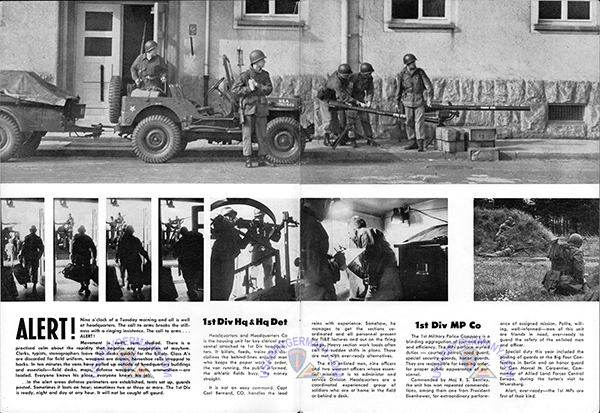
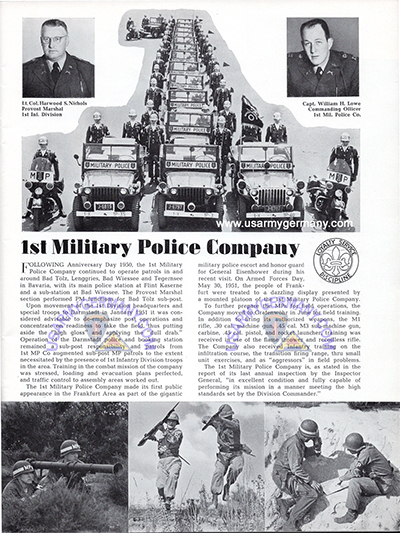
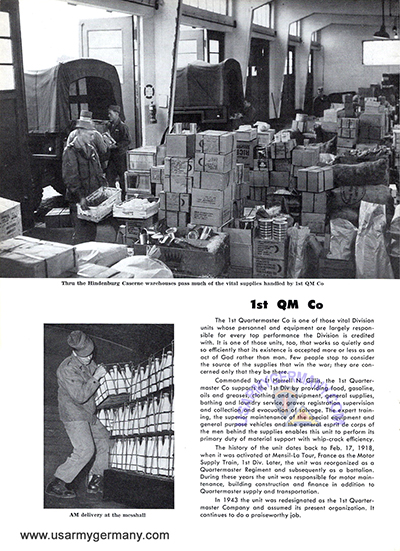
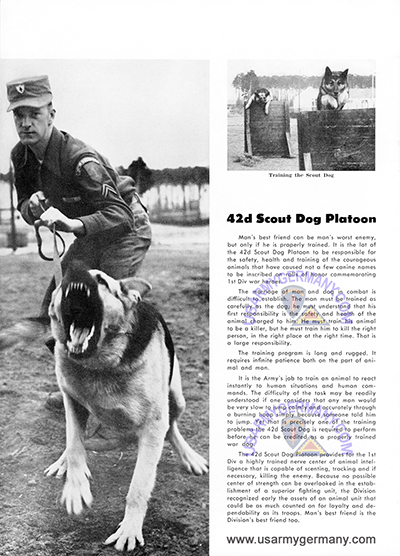
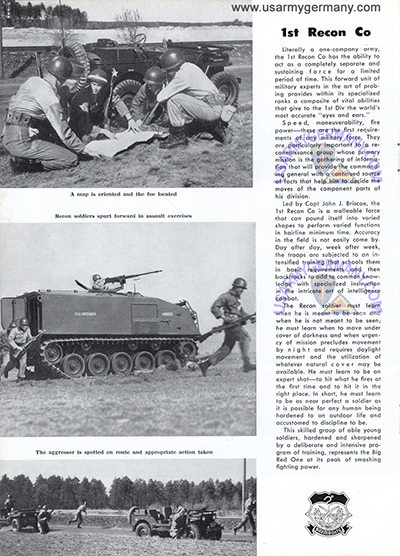
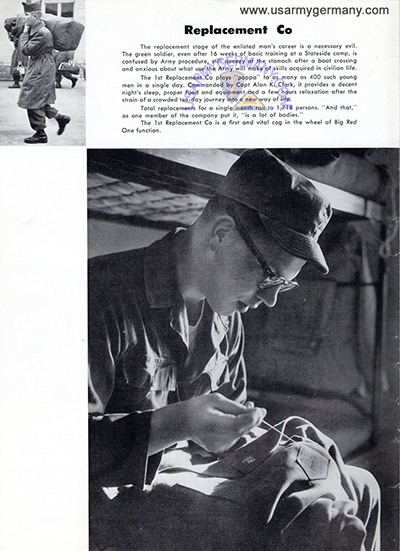
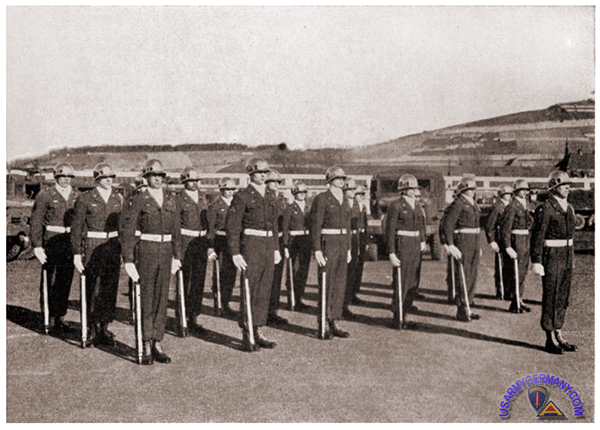
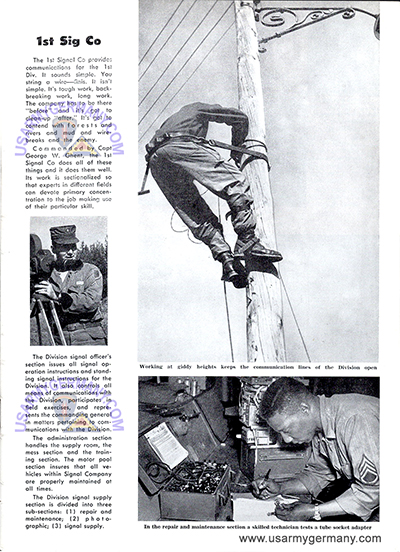
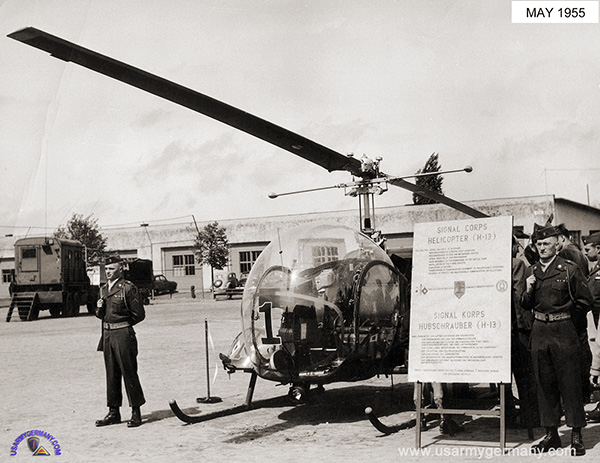
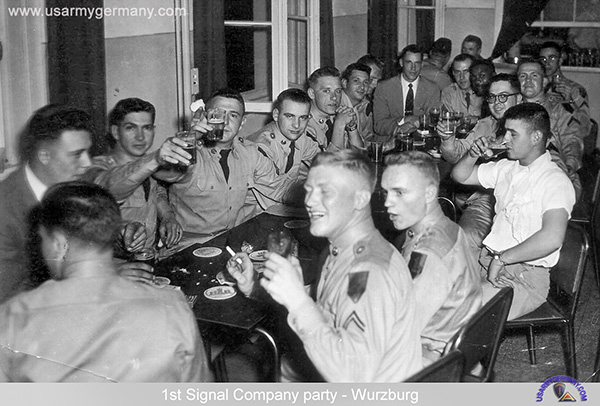
 John Veit as a student at the NCO Academy at Munich
John Veit as a student at the NCO Academy at Munich